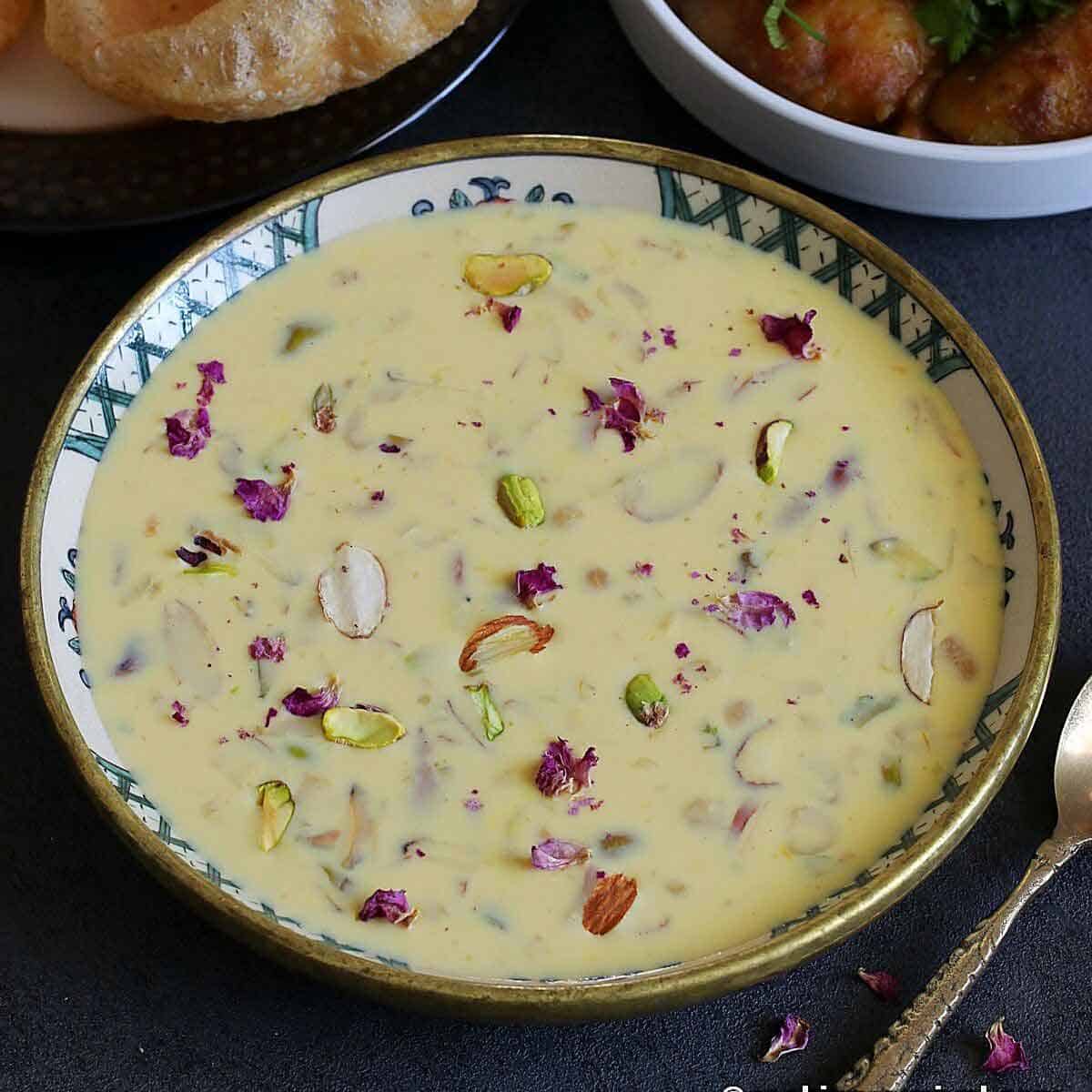In the vibrant tapestry of Indian cuisine, few desserts can rival the decadence and depth of flavor found in Rabri. A sumptuous confection made from milk, sugar, and time, Rabri holds a special place in the hearts of those who relish traditional Indian sweets. With its rich history dating back centuries and its intricate preparation process, Rabri is not just a dessert but a culinary journey that takes us through the annals of Indian culture and tradition.
Historical Significance:
Rabri’s origins can be traced back to ancient India, where the dessert was often prepared as an offering during religious ceremonies and celebrations. Its roots are deeply embedded in the traditions of North India, particularly in the states of Rajasthan, Uttar Pradesh, and Punjab. The dessert’s name itself, “Rabri,” is said to have been derived from the Persian word “rab,” meaning “to soak,” indicating the slow and patient cooking process that is central to its creation.
Culinary Artistry:
At its core, Rabri is a milk-based dessert that showcases the transformative power of heat and time. The preparation of Rabri begins with simmering milk in a wide, heavy-bottomed pan over low heat. As the milk heats, a fascinating alchemical reaction occurs. The milk reduces, thickens, and develops a complex flavor profile through the caramelization of its natural sugars.
To achieve the signature grainy texture of Rabri, the milk is intermittently stirred and the cream that forms on the surface is gently folded back into the mixture. This step ensures that the dessert is not only luscious but also slightly granular, adding a delightful textural contrast to each spoonful.
Ingredient Harmony:
The simplicity of Rabri’s ingredients belies the depth of flavor it achieves. Milk forms the backbone of this dessert, providing the canvas upon which the other elements are painted. Sugar, the second key ingredient, not only sweetens the dessert but also aids in the caramelization process that imparts a rich hue and complex aroma.
To further elevate the flavor profile, Rabri often incorporates ingredients such as saffron, cardamom, and chopped nuts. Saffron lends its distinct golden hue and a subtle, earthy fragrance, while cardamom imparts a warm, aromatic note that harmonizes beautifully with the sweetness of the dish. Chopped nuts, like almonds and pistachios, add a satisfying crunch and nutty undertones, completing the ensemble of flavors and textures.
Labor of Love:
Rabri’s preparation is a labor-intensive process that demands patience and a certain finesse. The act of continuously stirring the milk prevents it from scorching and sticking to the bottom of the pan, while also encouraging the gradual evaporation of excess moisture. This concentration of flavors and sugars is the essence of Rabri’s distinctive taste.
As the milk transforms, its color deepens to a golden hue, signaling that the dessert is nearing completion. The careful balance of heat, stirring, and time is the hallmark of a skilled cook who understands the art of creating the perfect Rabri.
Recipe:
While the process of making Rabri may seem intricate, the ingredients and steps are relatively simple. Here’s a traditional Rabri recipe for you to try at home:
Ingredients:
- 1 liter full-fat milk
- 1/2 cup sugar (adjust to taste)
- A pinch of saffron strands
- 4-5 green cardamom pods, crushed
- Chopped nuts (almonds, pistachios), for garnishing
Instructions:
- In a wide, heavy-bottomed pan, pour the milk and bring it to a gentle boil.
- Reduce the heat to low and let the milk simmer. Stir occasionally to prevent sticking.
- As the milk simmers, a layer of cream (malai) will form on the surface. Gently fold this cream back into the milk.
- Continue simmering and stirring. The milk will gradually reduce in volume.
- After about 30 minutes, add the sugar and crushed cardamom pods. Mix well.
- Crush the saffron strands between your fingers and add them to the milk. This will infuse the dessert with a beautiful color and aroma.
- Keep simmering and stirring until the milk has reduced to about one-third of its original volume. This should take around 1 to 1.5 hours.
- Once the milk has thickened and turned a rich golden color, remove the pan from the heat.
- Allow the Rabri to cool slightly before refrigerating it. As it cools, it will continue to thicken.
- Garnish the chilled Rabri with chopped nuts before serving.
Savoring the Tradition:
Rabri is not merely a dessert; it is a testament to the culinary ingenuity of Indian cooks who transformed humble ingredients into an indulgent masterpiece. As you take your first bite of Rabri, you are tasting history, culture, and the meticulous craftsmanship that goes into creating a dessert that transcends time.
Whether enjoyed on its own, drizzled over malpua (a sweet Indian pancake), or as an accompaniment to other traditional sweets, Rabri is a celebration of the richness of Indian gastronomy. It reminds us that sometimes the most cherished flavors are born from simplicity, patience, and a deep connection to one’s culinary heritage. So, the next time you savor a spoonful of Rabri, remember that you are partaking in a tradition that has been passed down through generations—a tradition that continues to delight palates and hearts alike.

